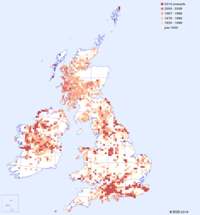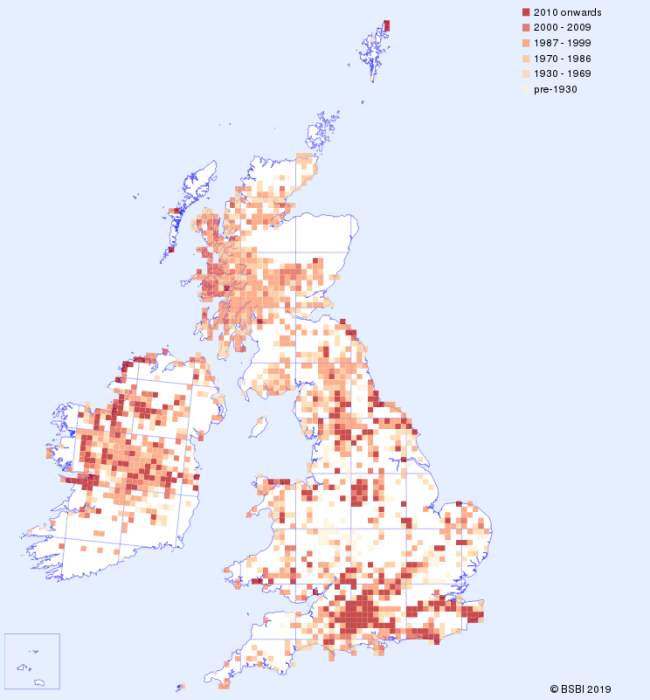Three species of Fragrant-orchids (Chalk Fragrant-orchid Gymnadenia conopsea, Marsh Fragrant-orchid Gymnadenia densiflora and Heath Fragrant-orchid Gymnadenia borealis) occur in the UK, but until recently they were regarded as merely subspecies or forms. The three are extremely difficult to tell apart, and they are also frequently confused with Pyramidal Orchid Anacamptis pyramidalis because of the similarity in colour and flower-shape. In the case of the Pyramidal Orchid, however, the flowerhead is more compact and oval when fully open, whereas the Fragrant-orchids have laxer, narrower and more pointed infloresences. Although locally abundant in some parts of the UK, Fragrant-orchids are in decline due to habitat destruction and the 'improvement' of meadows and pastureland. The habitat in which Fragrant-orchids grow is the key to separating the species from each other: the Chalk Fragrant Orchid grows almost exclusively on calcium-rich sites, and so chalk downland in the south and limestone pastures in the north of Britain and Ireland are good places to look. Chalk Fragrant-orchids are also found in some sand-dune systems and abandoned quarries. Although the flowers are usually various shades of pink, white specimens are also found from time to time. In Europe Fragrant-orchids can be found from Scandinavia in the north to the Mediterranean region in the south, although records do not often distinguish the precise species, merely referring to them as Fragrant-orchids.
| Distribution Map | Key Features | |
 |
Records for the Chalk Fragrant-orchid from BSBI are shown on the map with most recent in front. (Hover the mouse over the small map to expand it.) |
Plant: 10 to 40cm tall, occasionally to 60cm; stem mostly green becoming purple towards the top. |
Image Gallery for Chalk Fragrant-orchid Gymnadenia conopsea
| Pollination | Taxonomy & Hybrids |
The Chalk Fragrant-orchid is pollinated by both day-flying and night-flying moths although it may be assumed that, since the flower scent is much stronger at dusk, the night-flying moths may be more important. Vegetative reproduction also occurs via the formation of additional tubers. |
The specific name conopsea means 'cloudy' or 'gnat-like,' but neither term appears to have particular reference to the plants. There are no subspecies but two variations are known - var. albiflora has white flowers, and var. crenulata has broad lobes on the lip. |
Articles about Chalk Fragrant-orchid in JHOS
